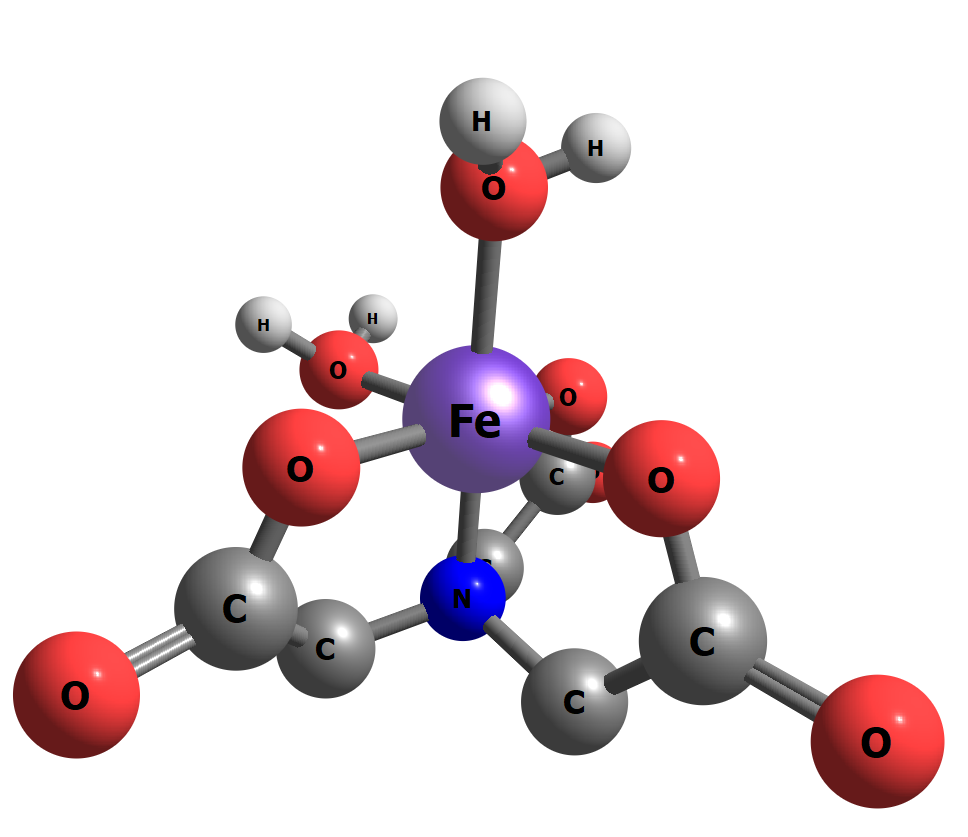- The paper demonstrates that a hybrid quantum-classical VQE approach achieves chemical accuracy in computing the ground-state energies of Fe(III)-NTA.
- It leverages number-preserving quantum circuits, subsystem diagonalization, and self-consistent configuration recovery to mitigate quantum errors effectively.
- The integration of quantum hardware with classical post-processing shows promise for scalable industrial quantum chemistry applications.
Solving an Industrially Relevant Quantum Chemistry Problem on Quantum Hardware
Introduction
This paper investigates the application of quantum computing to quantum chemistry problems, specifically targeting the calculation of low-energy eigenvalues for complex, strongly correlated chemical systems. The authors focus on Fe(III)-NTA, a metal chelate relevant in several industrial applications. The paper's primary goal is achieving chemical accuracy in these calculations using trapped ion quantum hardware, employing a variational quantum algorithm linked with classical diagonalization and error mitigation techniques.
Methodology
The approach revolves around a hybrid quantum-classical workflow. Initially, the authors configure a complex Hamiltonian that represents the active space of the target chemical system, which is then mapped onto the qubit space using the Jordan-Wigner encoding. The focus is on the variational quantum eigensolver (VQE) methodology, but with simplifications to optimize measurement efficiency and mitigate errors.
The paper emphasizes three core steps:
- Parameterized Quantum Circuit: Utilizes a number-preserving circuit that respects the particle number in each spin sector, initialized in a specific Hartree-Fock state and optimized using a modified VQE algorithm.
- Post-processing: Applies Subsystem Diagonalization (SD) to compute the ground state energy in the classically-recoverable subspace of the Hamiltonian.
- Error Mitigation: Employs Self-Consistent Configuration Recovery (SCCR) to correct erroneous bitstrings from quantum measurements, allowing the identification of the appropriate energy landscape.

Figure 1: Circuit parameter optimization using a ten-ion chain of 40Ca+ ions.
Results
The results highlight successful parameter optimization of quantum circuits, providing computed ground-state energies for different spin states of Fe(III)-NTA within chemical accuracy of existing theoretical values. The experimental hardware, utilized with error correction and optimized VQE procedures, revealed significant measurement efficiency and demonstrated an upper bound reduction to the ground-state calculation error.
The subsequent classical post-processing further validated these results, with the paper reporting discrepancies of only 0.66 mHa (Intermediate Spin, IS state) and 1.05 mHa (Low Spin, LS state) from the exact theoretical calculations. The results also showed the feasibility of integrating quantum hardware outputs into full chemical simulations, predicting relative Gibbs free energies in aqueous solutions.
The complexity of calculated systems was analyzed by comparing multi-reference diagnostics, positioning the work among those solving the most complex quantum chemistry problems via quantum hardware to date (Figure 2).
(Figure 2)
Figure 2: Probability weight of flipping a faulty bit dependent on the corresponding orbital's average occupation ⟨ni,σ⟩.
Discussion
The paper underscores the potential of quantum computing as a tool for industrial quantum chemistry applications, promising significant advantages over classical methods in handling complex systems characterised by large active spaces and strong electron correlations. The combination of quantum and classical computing enabled advancements in precision of quantum chemistry calculations. This serves as a testament to the evolving capabilities of quantum devices to address industrially relevant chemistry problems.
Implications for future work include the prospect of scaling these methodologies to more complex systems and exploring expanded applications in quantum-enabled material design and pharmaceutical industries. The paper paves the way for future exploration of integrating quantum computation with traditional chemical modeling to accelerate innovation in molecular synthesis and energy transformation processes.
Conclusion
This paper provides a significant step towards increasingly complex quantum chemistry calculations on quantum hardware, showing the viability of solving real-world problems with current quantum technologies. The demonstrated techniques offer a solid basis for expanding quantum computing's role in science and industry, emphasizing the importance of hybrid workflows and robust error mitigation strategies to harness quantum computing's power effectively.
